Kordylewski Clouds – dust moons of the Earth-Moon System
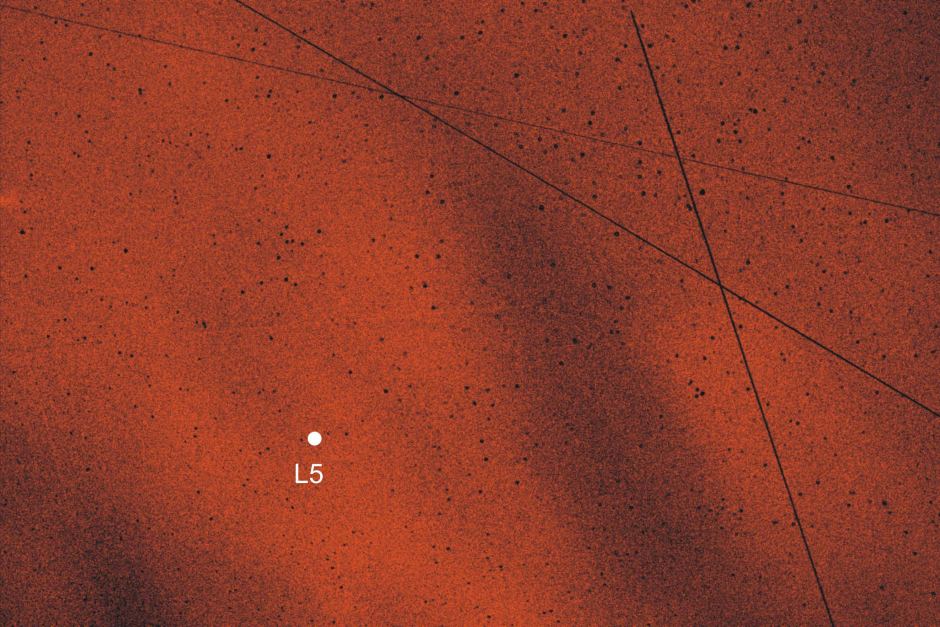 At the end of October 2018, an interesting set of publications, by a team of Hungarian scientists, were published in the Monthly Notices of the Royal Astronomical Society. Judith Sliz-Balogh, Andras Bart and Gabor Horvath reported their observations of the Earth’s dust moon. The initiator of the search for these dusty moons of Earth was doc. Kazimierz Kordylewski from the Astronomical Observatory of the Jagiellonian University.
At the end of October 2018, an interesting set of publications, by a team of Hungarian scientists, were published in the Monthly Notices of the Royal Astronomical Society. Judith Sliz-Balogh, Andras Bart and Gabor Horvath reported their observations of the Earth’s dust moon. The initiator of the search for these dusty moons of Earth was doc. Kazimierz Kordylewski from the Astronomical Observatory of the Jagiellonian University.
Blazars behind the Magellanic Clouds
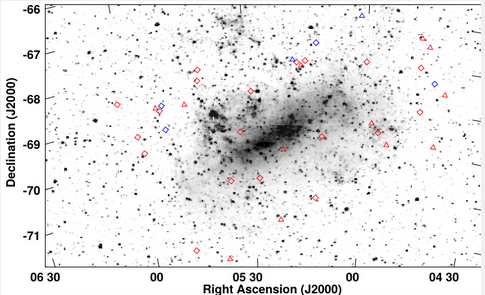 Flat-spectrum radio quasars (FSRQs) and BL Lacertae objects (BL Lacs) constitute a class of active galactic nuclei (AGN) called blazars. Their total radiative energy is dominated by non-thermal emission from relativistic jets launched by accretion disk - supermassive black hole system most often located in center of massive elliptical galaxies. The FSRQs exhibit prominent emission lines in their optical spectra due to the thermal plasma contribution, while such lines are weak or even absent in the BL Lacs.
Flat-spectrum radio quasars (FSRQs) and BL Lacertae objects (BL Lacs) constitute a class of active galactic nuclei (AGN) called blazars. Their total radiative energy is dominated by non-thermal emission from relativistic jets launched by accretion disk - supermassive black hole system most often located in center of massive elliptical galaxies. The FSRQs exhibit prominent emission lines in their optical spectra due to the thermal plasma contribution, while such lines are weak or even absent in the BL Lacs.
SBS B1646+499: black hole with a jumbled past
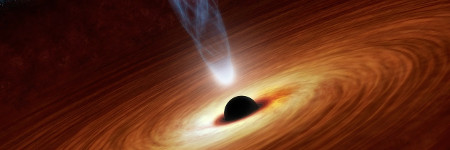 Blazars constitute a particular class of so-called active galaxies (AGNs, Active Galactic Nuclei). These exotic objects emit huge amount of energy. ZBlazars host very masive black holes in their centers, surrounded by accretion discs and toruses. Their high-energy radiation is mostly emitted in collimated streams called jets. The emission of such objects is dominated by the relativistically boosted, non-thermal emission of the jets observed at a small angle to the observer on Earth. In the case of blazar SBS B1646+499, the galaxy activity phase associated with the jet production has already occurred at least twice.
Blazars constitute a particular class of so-called active galaxies (AGNs, Active Galactic Nuclei). These exotic objects emit huge amount of energy. ZBlazars host very masive black holes in their centers, surrounded by accretion discs and toruses. Their high-energy radiation is mostly emitted in collimated streams called jets. The emission of such objects is dominated by the relativistically boosted, non-thermal emission of the jets observed at a small angle to the observer on Earth. In the case of blazar SBS B1646+499, the galaxy activity phase associated with the jet production has already occurred at least twice.
Detection of Periodic Radio Signal from the Blazar PKS 0219-164
 Blazars are the most luminous sources in the Universe. They are believed to harbor monstrously giant black holes fed by the matter falling from the parsec-scale accretion disks. These sources launch the most powerful relativistic jets beamed upon us and ejecting matter with high speeds. In the radio images, the jets appear to extend up to a large distance from the central engine, and in some cases radio knots show superluminal motion with apparent velocity up to about 37 times the speed of light. Blazars consist of two kinds of sources: flat-spectrum radio quasars (FSRQ) and BL Lacertae objects. FSQRs are more powerful, show emission lines over the continuum and have the synchrotron peak in the lower part of the spectrum; whereas BL Lac objects are less powerful, show weak or no emission lines, and have synchrotron peak in the higher part of the spectrum. BL Lacs represent an extreme class of sources with maximum synchrotron and inverse-Compton energies (hard X-rays to TeV emission); however, in comparison to the more luminous FSRQs, they accrete at relatively low rates and do not possess strong circum-nuclear photon fields.
Blazars are the most luminous sources in the Universe. They are believed to harbor monstrously giant black holes fed by the matter falling from the parsec-scale accretion disks. These sources launch the most powerful relativistic jets beamed upon us and ejecting matter with high speeds. In the radio images, the jets appear to extend up to a large distance from the central engine, and in some cases radio knots show superluminal motion with apparent velocity up to about 37 times the speed of light. Blazars consist of two kinds of sources: flat-spectrum radio quasars (FSRQ) and BL Lacertae objects. FSQRs are more powerful, show emission lines over the continuum and have the synchrotron peak in the lower part of the spectrum; whereas BL Lac objects are less powerful, show weak or no emission lines, and have synchrotron peak in the higher part of the spectrum. BL Lacs represent an extreme class of sources with maximum synchrotron and inverse-Compton energies (hard X-rays to TeV emission); however, in comparison to the more luminous FSRQs, they accrete at relatively low rates and do not possess strong circum-nuclear photon fields.
TXS 0506+56: energetic cosmic neutrino source due to very high energy gamma ray observations
On September 22nd last year the Ice Cube Neutrino Observatory at the South Pole detected a high energy neutrino with a likely cosmic origin. A single neutrino does not suffice to identify its source. Very soon after its detection telescopes working at different wavelengths of the electromagnetic spectrum started to observe the possible location it came from.
First long term all-frequency power spectral analysis of OJ 287
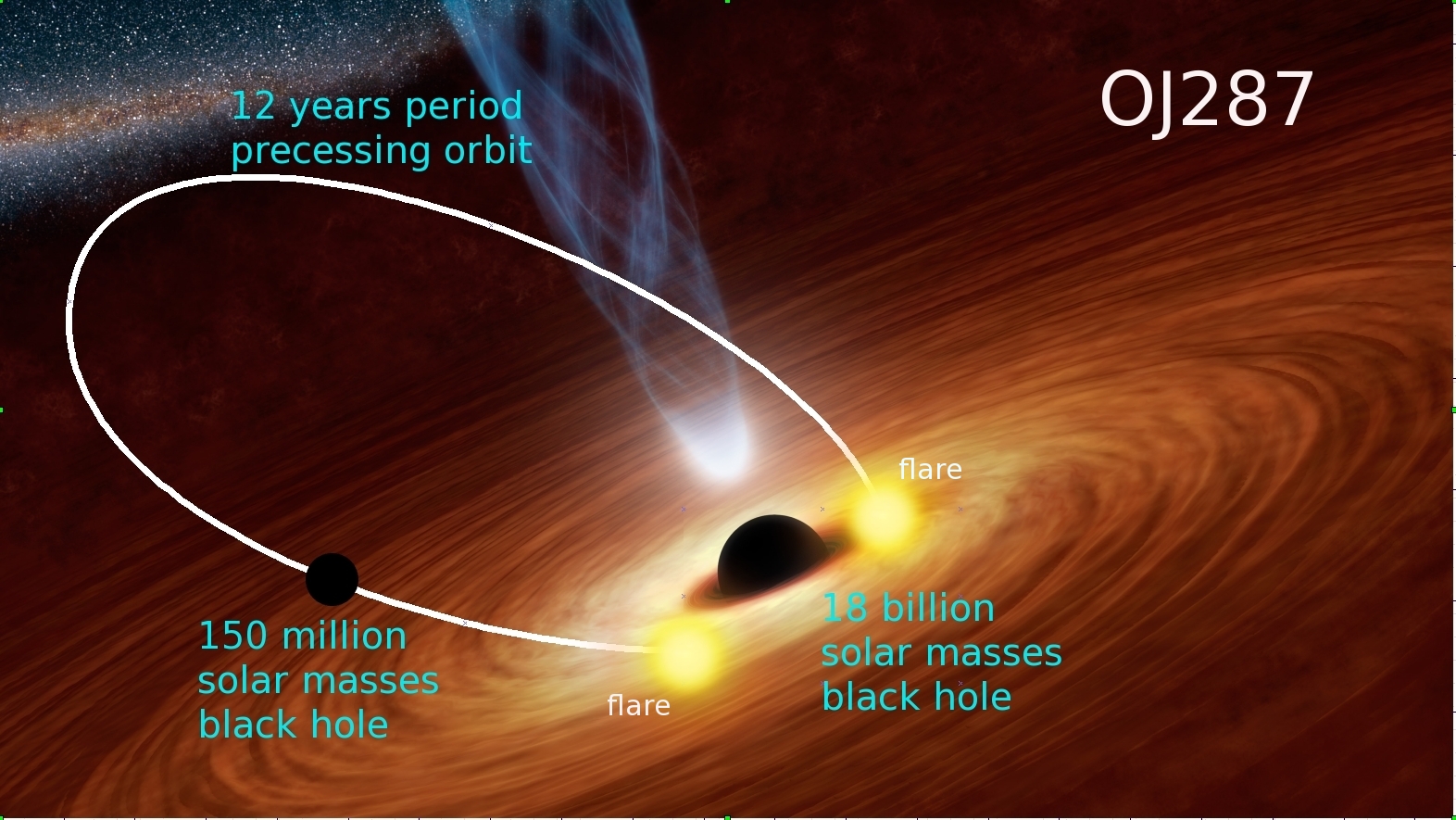 OJ 287 is a BL Lac object located 3.5 billion light-years away in the Cancer constellation. It produces quasi-periodic optical outbursts going back approximately 120 years, as first apparent on photographic plates from 1896. Its optical light curve shows a quasi-periodic oscillation consisting of two narrow peaks with period around 11–12 years. This behaviour has been interpreted as a signature of a presence of a binary supermassive black hole system consisting of two black holes of widely different masses (1010 and 106 solar masses). The double-burst variability is believed to result from the smaller black hole punching through the accretion disc of the larger black hole every 12 years. The international team headed by Dr Arti Goyal from the Astronomical Observatory of the Jagiellonian University conducted the first long term all-frequency power spectral analysis for OJ 287, using also the data from Kepler satellite and constructing the optical variability power spectrum without any gaps. The results are published in The Astronomical Journal.
OJ 287 is a BL Lac object located 3.5 billion light-years away in the Cancer constellation. It produces quasi-periodic optical outbursts going back approximately 120 years, as first apparent on photographic plates from 1896. Its optical light curve shows a quasi-periodic oscillation consisting of two narrow peaks with period around 11–12 years. This behaviour has been interpreted as a signature of a presence of a binary supermassive black hole system consisting of two black holes of widely different masses (1010 and 106 solar masses). The double-burst variability is believed to result from the smaller black hole punching through the accretion disc of the larger black hole every 12 years. The international team headed by Dr Arti Goyal from the Astronomical Observatory of the Jagiellonian University conducted the first long term all-frequency power spectral analysis for OJ 287, using also the data from Kepler satellite and constructing the optical variability power spectrum without any gaps. The results are published in The Astronomical Journal.
In-depth measurements of the interstellar asteroid ‘Oumuamua unveil its turbulent past and verify previous reports
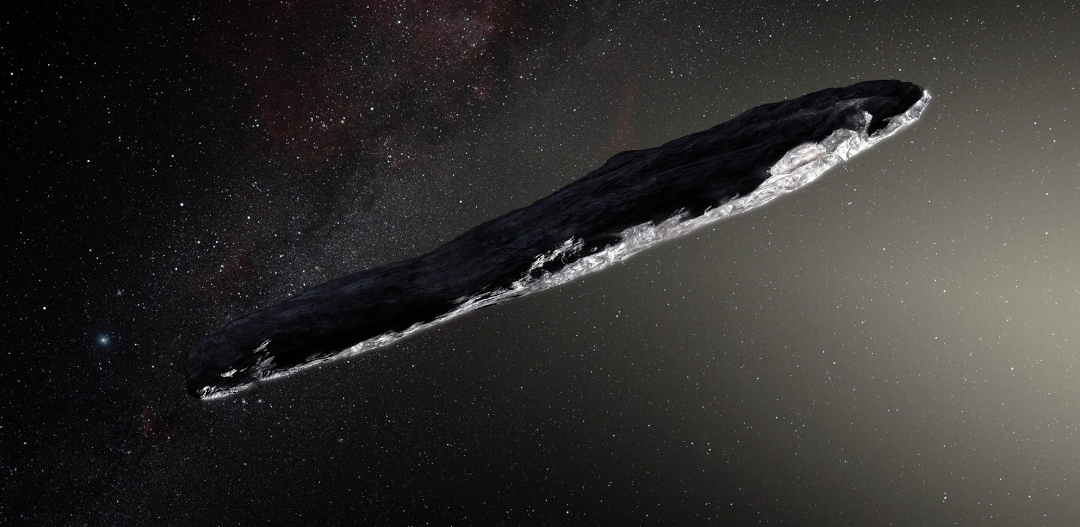 ‘Oumuamua is the first astronomical object known to science to have entered the Solar System from the interstellar space, having been ejected from its original planetary system. Using the giant Gemini North telescope in Hawaii, a team of scientists led by astronomers from the Jagiellonian University in Kraków conducted an in-depth study of the body. Among other findings, the study revealed that ‘Oumuamua is “tumbling” through space, consistent with a collision in the distant past, as well as verified and expanded upon a number of previous reports. The results have just appeared in the latest issue of Nature Astronomy
‘Oumuamua is the first astronomical object known to science to have entered the Solar System from the interstellar space, having been ejected from its original planetary system. Using the giant Gemini North telescope in Hawaii, a team of scientists led by astronomers from the Jagiellonian University in Kraków conducted an in-depth study of the body. Among other findings, the study revealed that ‘Oumuamua is “tumbling” through space, consistent with a collision in the distant past, as well as verified and expanded upon a number of previous reports. The results have just appeared in the latest issue of Nature Astronomy

